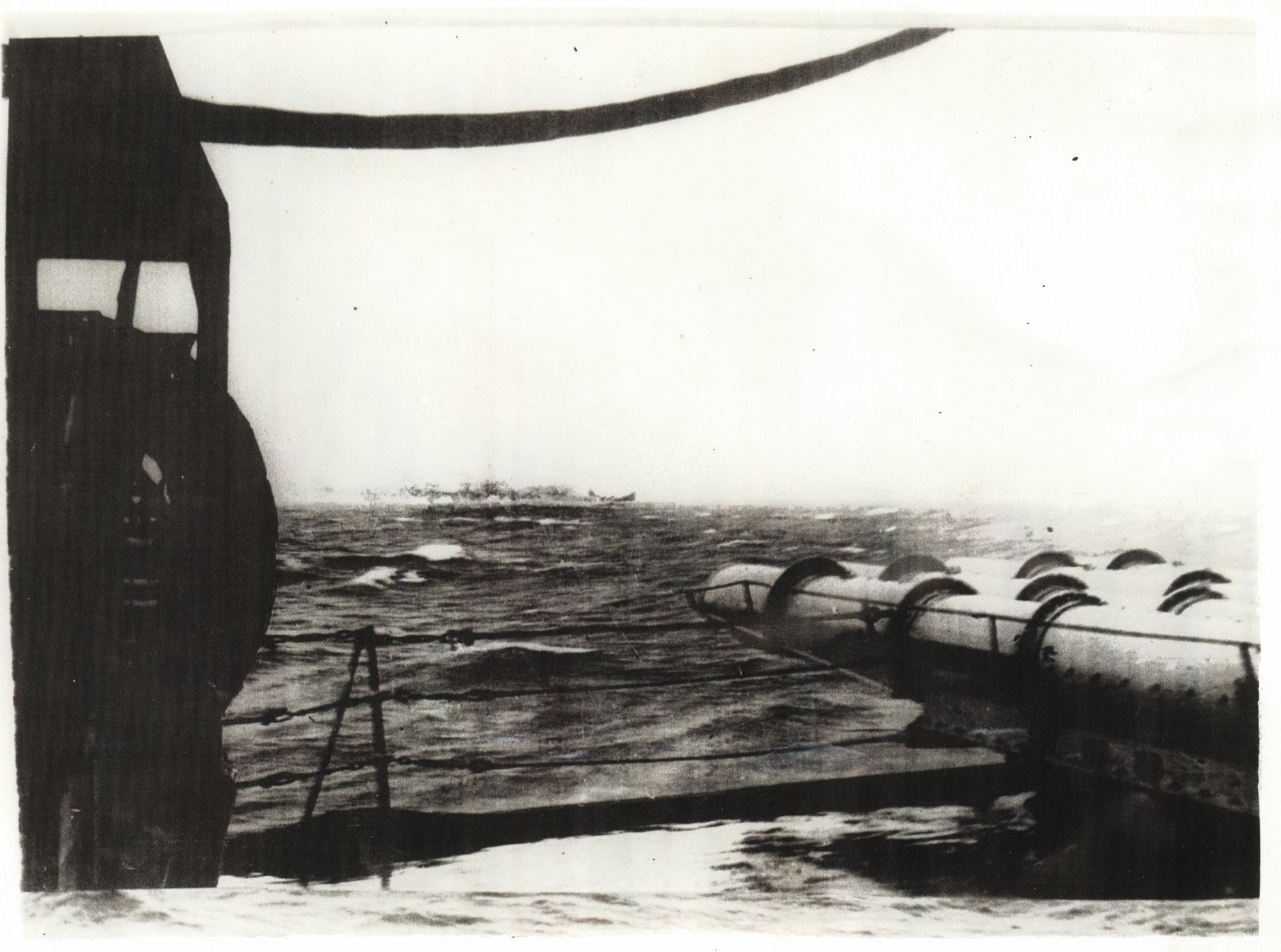
Torpedoes were paid for by the Army until 1910 when this area was taken over by the Naval Ordnance Department. Torpedoes were then manufactured in Royal Government Factories or at Whitehead Works, Weymouth, while torpedo tubes were made in Royal Dockyards.
British Torpedoes of the World War I and World War II period were designated by their diameter in inches together with a "Mark" followed by a simple Roman Numeral. Each individual diameter had its own series of Mark numbers. Modifications were denoted with asterisks, with each modification adding an additional asterisk.
For example, the designation 21" Mark VIII** meant that this was the eighth torpedo developed in the 21 inch (53.3 cm) series and that it was to the second modification of the original design.
All British 18" torpedoes had an actual diameter of 17.7" (45 cm).
Torpedoes developed since World War II have been given "fish" names, such as "Spearfish" and "Tigerfish."
During World War II, torpedoes were manufactured at the Royal Naval Torpedo Factory at Greenock and Alexandria, near Dumbarton; the Vickers-Armstrong (formerly Whitehead) works at Weymouth. Many USA torpedoes were used, especially those for aircraft and Lend-Lease destroyers. The USA also supplied large numbers of their Mark 24 (Fido) homing torpedo. Britain had a total of about 7,100 torpedoes in stock as of September 1939, but over 4,000 of these were of obsolescent types no longer in production.
Britain held a technological lead in torpedo development for much of the period between the World Wars, but they were overtaken by the Japanese with their use of pure oxygen. However, the British remained ahead of all other nations. This success was mainly due to the adoption of the Brotherhood burner-cycle engine. The burner-cycle engine was in effect a semi-diesel. Typically, air pressurized to about 840 lbs./in2 (59 kg/cm2) was heated to about 1,800ºF (1,000ºC) by burning a small amount of atomized kerosene-type fuel. This hot air/gas mixture was then fed into the engine via poppet valves and more fuel was injected into each cylinder a little before TDC (Top Dead Center). The spontaneous ignition of this mixture powered the engine.
Oxyen-enrichment was employed for the large 24.5" (62.2 cm) Mark I torpedoes used on the Nelson class battleships and for the 21" (53.3 cm) Mark VII torpedoes used on cruisers, but they were not well regarded as the oxygen enrichment process was cumbersome and difficult to use. The performance of these torpedoes was far below the much more successful Japanese oxygen-fueled torpedoes which were, ironically, developed when a Japanese officer overheard a conversation about the use of oxygen. Cruiser torpedoes were converted to natural air in the early part of World War II.
Hydrogen peroxide for propulsion had been studied in 1923, but its innate instability and procurement problems meant that work was quickly abandoned. Following the end of World War II, German and USA work was investigated and a few 21" (53.3 cm) Mark 12 Ferry/Fancy were issued starting in 1954, but following the destruction of the submarine HMS Sidon and an explosive failure on the Arrochar test range, the project was cancelled in 1959.
The Royal Navy had no great interest in using electric motors for torpedoes prior to World War II as they had relatively poor performance and because there was no demand for tracklessness. During the war, experiments were conducted using captured German G7e torpedoes, but the war ended before British-produced versions were in service. Captured examples of German electric torpedoes were given to the USA, who used them in developing their own electric torpedoes. A program for an electric-powered 22.4" (56.9 cm) torpedo developed by the RAF was abandoned before entering production.
Torpedoes developed after World War II are either Hap-Otto fueled pump-jet powered (Spearfish) or else use high-capacity battery-powered electric motors.
The failure of the World War II British Magnetic Pistol called Duplex Coil Rod (DCR) is well known. Although successful at the raid on the Italian fleet at Taranto, it generally proved unsatisfactory but remained in service until 1943.
Its replacement, the CCR (compensated coil rod) with amplifier, was much better, but liable to microphony (fraternal kill) from nearby explosions or vibration if the torpedo broke the surface. CCRs used in the Far East were also found to be greatly affected by heat. CCR did not become standard on 21" (53.3 cm) torpedoes until January 1945 and the 18" (45 cm) version for aircraft was never developed sufficiently enough to enter service.
The following figures were compiled shortly after the end of World War II. These numbers do not appear to have been correlated against Axis records. As such, the number of hits is almost certainly over-stated.
| Ship Type | Torpedoes Fired | Certain Hits | Probable Hits | Percentage of Certain and Probable Hits |
|---|---|---|---|---|
| Capital Ships | 12 | 0 | 1 | 8.3 |
| Cruisers | 94 | 16 | 4 | 21.3 |
| Destroyers | 606 | 86 | 12 | 16.2 |
| MTB and SGB | 1,328 | 318 | 37 | 26.7 |
| Submarines | 5,121 | 1,040 | 95 | 22.2 |
| Naval Aircraft | 609 | 167 | 37 | 33.5 |
| Totals | 7,770 | 1,627 | 186 | 23.3 |
Data from:
- "Jutland: An Analysis of the Fighting" and "Naval Weapons of World War Two" both by John Campbell
- "British Destroyers, A history of Development 1892-1953" by Edgar J. March


